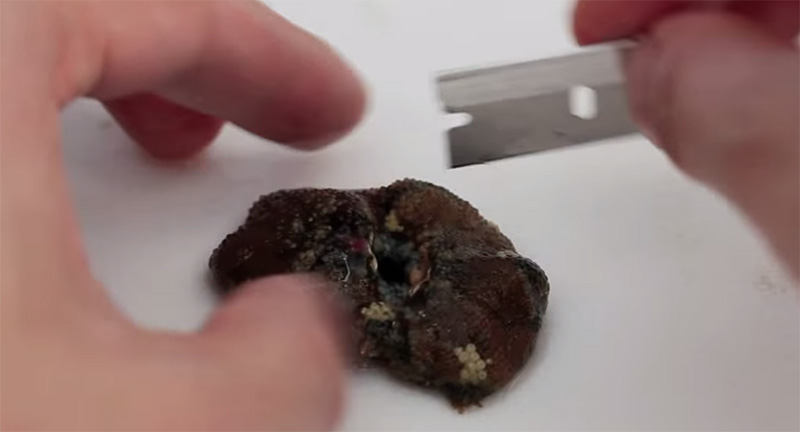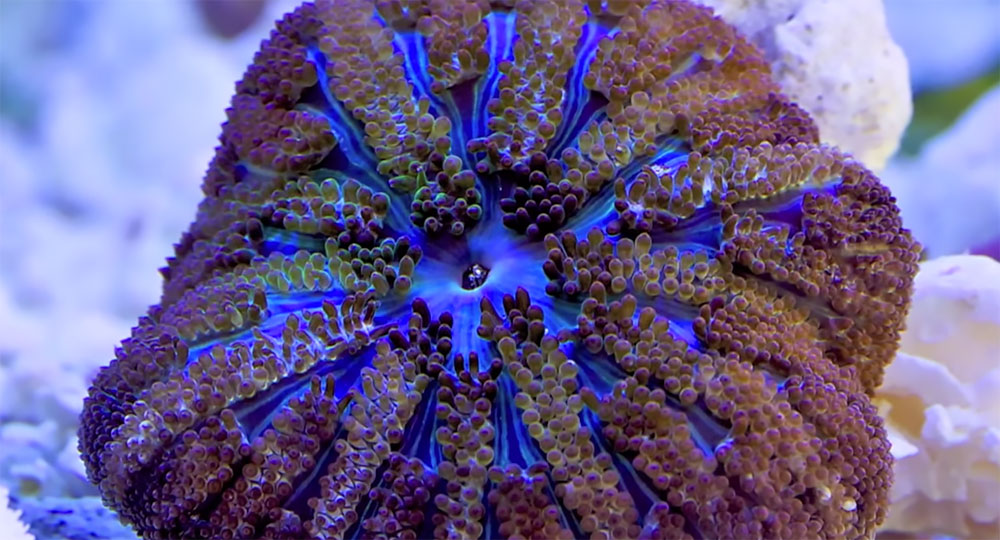For years now we have been propagating Mini Maxi anemones (also known as Maxi Mini anemones, and Stichodactyla tapetum). They are easy to propagate by cutting them in half and letting them heal for a month or two. Most aquacultured corals are asexually produced by either by them naturally splitting or by propagation techniques like cutting and remounting.

To asexually propagate The Mini-Maxi, or Maxi-Mini, Carpet Anemone – Stichodactyla tapetum, it’s just a quick slice in half, followed by disinfecting bath, and a month of recovery.
Sexual reproduction on the other hand is much less common. Here at the Tidal Gardens greenhouse spawning does in fact occur. Recently, we observed our mini maxi carpet anemones spawning!
Sexual reproduction in anemones is done by way of broadcast spawning. Broadcast spawning is where the anemones release both sperm and egg into the water column. Fertilized eggs later settle on the substrate and form new anemones.
I believe the main reason coral and anemone spawning is uncommon in most home aquariums is due to the close tie between spawning and the lunar cycles. Anemones rely so much on the moon for sexual reproduction there is no guarantee an egg will come in contact with sperm. If the anemones mistime their release of gametes by as little as 15 minutes, the chance of successful fertilization occurring is greatly minimized. Thus, they use the moon, sunset, and chemical receptors to determine the optimal time to spawn. Most home aquariums do not simulate the phases of the moon (although some newer fixtures are incorporating this feature into their products).
The other reason not too many people see spawning events is that most of the time, hobbyists aren’t looking at their tanks in the middle of the night. On this particular occasion, my friends and I decided to shoot some pictures at night.
Although it does not appear we got any baby carpet anemones this time, perhaps in the future sexual reproduction of corals and anemones will be a sustainable method of propagation.








Like the propagation video. Have a question. I had a break out of aptasia in my tank I removed the rock but still have aptasia in my sump. Do you have any ideas on how to clean the sump.
thanks
Angelo